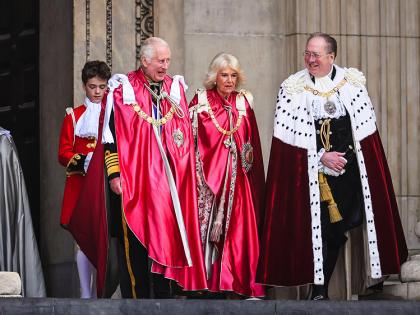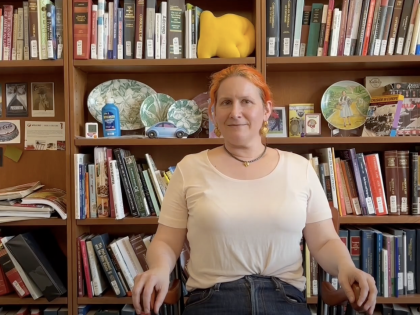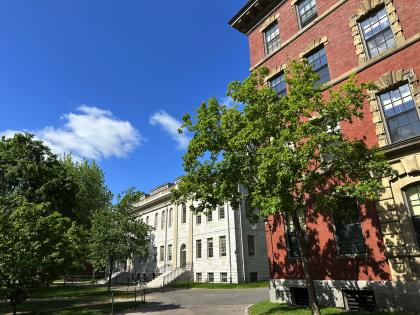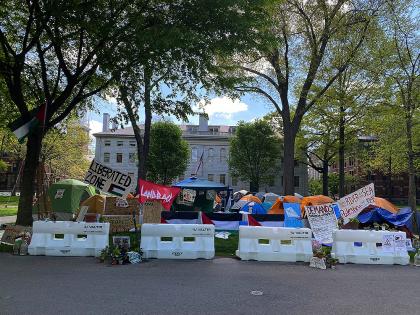These days, super PACs (political action committees) don’t seem so super anymore. Donald Trump wrapped up the Republican nomination without significant support from one, while his money-flush rivals dropped off one after another. Jeb Bush fizzled out in February when the $100 million spent by his Right to Rise super PAC failed to generate liftoff. Marco Rubio threw in the towel a month later, when the $62 million donated to his support groups couldn’t spare him the humiliation of losing in his home state. And no matter how much money oil barons lavished on him, Ted Cruz, too, had to go gentle into that good night.
So does money really matter?
The fear that U.S. elections and institutions would all come crashing down in a flood of money was ignited after the infamous Citizens United ruling in 2010. In this panicked view, the Supreme Court had not only inaugurated a new Gilded Age, but also given it the veneer of constitutionality—leaving the nation’s imminent plutocracy impervious to future legislative correction. Though Citizens United actually focused on a small rule banning nonprofits from airing “electioneering communications” within 60 days of an election, its logic was expanded in subsequent cases into this basic principle: As long as political spending is “uncoordinated” with candidates and their official campaigns, it cannot be regulated under the First Amendment, even if the donor is a corporation or a labor union. That opened the door to unlimited contributions to, and spending by, these parallel campaigns—in theory giving them financial leverage that could overshadow candidates’ official campaigns (contributions to which fall under strict federal limits).
Opponents quickly sloganized the ruling as “Money is speech and corporations are people”—though, as with all slogans, theirs contained only a fraction of the truth. Its philosophical thrust was correct: the court had upended the rationale for the modern regime of campaign-finance regulation (in place since the 1970s) that had allowed regulation of both “corruption or the appearance of corruption.” Instead, the majority opinion limited future regulatory intervention to narrower quid pro quo corruption (think money-stuffed manila envelopes). But even seemingly cut-and-dried corruption cases might be suspect under the new order: disgraced Virginia governor Bob McDonnell is currently challenging before the Supreme Court his conviction for accepting $177,000 worth of luxury items and gifts from a businessman on the grounds that it was all just speech, not bribery. The outcome is uncertain as of this writing.
Though the issues are often muddled together, journalists, open-government activists, and ordinary citizens highlight two criticisms of the post-Citizens United era.
The first is adequate representation: the possibility that the super-wealthy, now free to cut multimillion-dollar checks, will become disproportionately important to politicians, who will in turn influence bureaucrats, lobby fellow lawmakers, and cajole government agencies to benefit their patrons. In the phrasing of Furman professor of law Lawrence Lessig, a prominent crusader for campaign-finance reform, serious candidates not in possession of private gold mines will all be forced to win the “invisible primary” of the ultra-wealthy donor class, at the expense of ordinary citizens whose votes are now worth much less—or, for all practical purposes, worthless.
The second is the matter of adequate selection. It is the fear that money, spent on advertisements, voter files, canvassing, consulting, statistics, or anything else, could actually change the minds of voters, and thus swing whole elections. And it’s hard to see that as anything less than a grave threat to democratic order.
To the first charge—that the ultra-wealthy have tightened their dominance over political donating—America must plead guilty. During the 2016 presidential race, through May 31, $462 million had already flowed to super PACs: 36.9 percent of total donations. Compare that with the 2012 contest between Barack Obama and Mitt Romney, where the role of super PACs was also bemoaned, though their funding supplied a now paltry-seeming 22 percent of total donations. Earlier in the 2016 cycle, an astounding two out of every three dollars was going to an outside group rather than directly to candidates. (The decreasing percentage of super PAC contributions since then reflects both the rise of Bernie Sanders’s online small-donation operation, and the winnowing of the Republican field.)
Much of that money comes from the richest of the rich. An early press release from Jeb Bush’s super PAC actually touted the fact that 95 percent of its donors had donated less than $25,000—not exactly within the price range of the middle class. In fact, nearly half of all super PAC money comes from just 50 donors, according to a Washington Post analysis. The much-vilified Koch brothers have set up a deeply financed network of political groups that almost parallels the Republican Party in funding and political prestige (even if it’s not paying dividends just yet: “You’d think we could have more influence,” Charles Koch bemoaned in the Financial Times earlier in the year).
But are big donors getting any bang for all those bucks? Given that politicians seldom admit outright that a controversial vote has been swayed by the influence of a heavyweight donor—at least while they are still in office—it can be hard for journalists to say for sure. But academics have had a bit more success. By using decades of survey data, Princeton professor Martin Gilens has demonstrated that American policymakers essentially respond only to the preferences of the affluent—those at the 90th percentile of the income distribution and above. The same goes for well-funded business lobbies vis-à-vis mass-based interest groups. Disturbing correlations, to be sure—but correlations nonetheless.
How do the voters fare amid this deluge of money? The question may be new, but the answer will be the same as another that has been intriguing political scientists for decades: Do political campaigns actually work? If they do, then the more money the merrier for aspiring elected officials. If they don’t, then maybe the quadrennial, multibillion-dollar spectacles that voters behold in the presidential race are only elaborate exercises in money-burning. Today, in fact, the availability of open data and statistical analysis enable us to begin to find answers.
In the 1960s, when party alignment was much stronger and face-to-face social networks were much more important to voter opinion (people were still bowling together then), the reigning theory was one of “minimal effects.” Campaigns were held to matter very little in determining election outcomes. But in the decades since, political scientists have come around, with some studies showing convincing associations between advertising and voting behavior, though the consensus is far from fully formed.
For my senior thesis in applied mathematics, I considered this question by analyzing the effects of television advertising on public opinion in the 2016 Iowa caucuses and New Hampshire primary. Because these contests were heavily polled (almost 100 for Iowa and 50 in New Hampshire), public opinion was registered almost instantaneously, allowing for comparison with data on the political television ads shown in each state (recently released to the public by the Television Ad Archive).
For Republican voters choosing among multiple candidates, ads seemed to work—a bit. Even when controlling for the number of rallies held and mentions on national and local television, swings in advertising volume were strongly correlated with swings in public opinion.
Between two competing Republicans, it would take an average of 232 more airings of positive ads over the span of a week to induce a single-point swing in voter preference. The returns to negative advertisements were weaker, though their effect was still statistically significant: 440 more negative ads directed at a candidate over the span of a week would trigger a one-point decline in the polls. That’s not to say negative ads necessarily have less effect on voters’ minds. Studies of voter psychology actually show that such ads are a bit better at piquing interest than positive advertisements touting a candidate’s character, biography, or accomplishments. But negative ads may just cause voters to shift to any number of competing candidates, diluting their benefits, while positive ads tend to increase the vote share of the target candidate.
No other variable registered a strong, statistically significant effect, including so-called earned media—the free publicity obtained from frequent news coverage—that self-flagellating journalists have taken to blaming for Donald Trump’s inexorable rise. Holding more candidate events was actually associated with drops in vote share, but this appears to be because candidates struggling to gain traction preferred aggressive, on-the-ground efforts to spending their limited funds on expensive advertising.
Among Democrats, where the race quickly shrank to Bernie Sanders and Hillary Clinton, I did not find a significant return on advertising. A few factors may help explain this. Advertising seems to yield benefits only when there are large imbalances among candidates. Both Sanders and Clinton swamped the airwaves with ads at very similar rates, as Sanders turned his impressive fundraising into a slight advantage over the Clinton machine. In addition, Republicans had the option of choosing among 11 or so serious candidates, some of whom were political neophytes or first-termers, making public appraisal less sure and thus more susceptible to the effects of advertising.
Perhaps the best way to conceptualize political advertisements, then, is as an arms race. One candidate’s dominance in the ad game, if unanswered, will soon lead to electoral advantage, but another candidate’s advertisements will tend to cancel out that gain.
If campaigns matter, then campaign money does, too. True, turning advertising into actual electoral advantage is an expensive endeavor: the cost of the 232 positive ads needed to deliver a single-point increase is more than $100,000 in relatively small markets like Iowa and New Hampshire, and more than that for the super PACs (which aren’t covered by the federal law requiring television stations to charge official campaigns the lowest possible rates). But these large sums are well within the means of the modern super PAC, the most prominent of which can expect to raise several million dollars in a week.
But it’s not just more advertising that super PACs buy—it’s also a different kind of advertisement. Since Congress passed a “Stand By Your Ad” provision in 2002, candidates have been required to give the now-familiar “I endorse this message” at the end of all commercials sponsored directly by their campaigns—and when these advertisements go very negative, there’s a real risk of backlash that does more harm than good. But commercials sponsored by independent organizations, and aired without a candidate’s endorsement, sidestep this problem. More significantly, voters also tend to believe them more, according to psychological studies.
Campaign managers appear to understand this phenomenon very well: 88 percent of official, campaign-sponsored advertisements in Iowa and New Hampshire were positive, compared with just 35 percent of super PAC ads. The mudslinging so frequently derided by pundits may be getting a second wind from this new campaign structure. This is not a small phenomenon: in Iowa and New Hampshire, a majority of commercials aired in the Republican race were super PAC-sponsored.
For down-ticket races, it stands to reason that political advertising effects are even stronger than for the presidential race. Even the most hardened politicos do not generally discuss the local state legislative race at the dinner table. Advertising and local media coverage likely constitute a greater fraction of the information diet for the less publicized races, probably making their importance greater—especially now that presidential-style campaigning has been exported to these races as well. Today, many Senate races and more than a few House races attract the support of single-candidate super PACs. And while we may hope that a future president is unlikely to move national policy on behalf of a benefactor, a senator or representative facing reelection may have fewer qualms.
Some analysts maintain that the “conventional wisdom” about the dominance of super PACs has been upended—that their effects, in competitive races, cancel each other. But such critics may be using the wrong counterfactual: it’s not that candidates with the super PAC have lost, it’s how much worse they would have fared without such aid. Of course, among a field of a dozen or so competitors, almost all of whom have major super PAC backing, only one can emerge a winner. (To quote Syndrome, the villain of the animated superhero film The Incredibles, “When everyone’s super…no one will be!”)
The evidence suggests that those who speak apocalyptically about super PACs as a new regime of legalized bribery are a bit overwrought. Instead, these entities are powerful new instruments for influence—over both voters and elected officials—that are beyond the means of the average citizen. Economic elites did not suddenly acquire political influence in 2010—but they may have further tightened their grip on it. One does not need to be an ardent majoritarian to find that worrying.
Maybe democracy shouldn’t reflect the views of the median voter, but few would agree that it should only reflect the views of the affluent. But unless and until the Supreme Court reverses itself, the current regime of lax campaign finance and ever-more-important super PACs will continue. The chance of that depends largely on the outcome of the 2016 presidential race. And the outcome of the 2016 race will likely depend on those very same super PACs.








